Choosing a Road Bike Groupset
Earlier this week I wrote about the decision-making process leading me to a new Quintana Roo SRsix road frame, with the promise that I would follow up with how I chose the groupset, the wheels and tires, and so on. Below is the groupset.
Yesterday I was grunting up an incline on this bike: a section of road that included a three-quarter mile stretch averaging an 11-percent grade. I was pedaling a cadence of about 75rpm, in my lowest gear, and I was producing around 230 watts. What I understood then is that for my riding – for what I intend to ride; for what I intend to do with this new bike – I’m a bit over-geared (I don’t have a low enough gear).
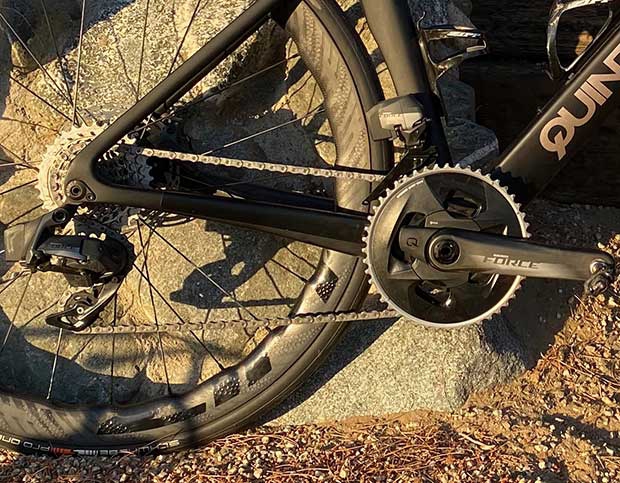
My reasoning is based on the following three data points. First, that I just don’t produce the power I used to! Second, I do a lot of climbing; I’m building this as a vehicle for that climbing, and where I intend to ride there are sustained grades of 20 percent. Third, I don’t want to be grinding 30 RPMs up a hill when I’m on those steepest pitches. So…
What groupset I was going to put on this frame I just built up? For starters, one I got a good deal on! (Which happened in this case.) But I wouldn’t have invoked the deal had it not been some version of SRAM eTap AXS. The reason this was my best option for this bike (regardless of deal) is gearing. Gearing, gearing, gearing. This is the primary driver when I choose a groupset, regardless of bike style.
At least in theory. I say in theory because the groupset I acquired has a set of 48×35 chain rings on the front, and a 10-33 gearbox on the back (when you get a deal, beggars can't be choosers). I have available to me, with SRAM’s AXS groupsets, a chain ring as small as 30 teeth in the front and I can have a 36-tooth cog in the back. These lower gears require special editions of SRAM’s derailleurs. There is a front derailleur specially made for SRAM’s 43×30 crank, where the crank sits a little further outboard from the frame for tire clearance purposes, and the derailleur cage sits a little outboard as well, to accommodate this. The rear derailleur that’s available is what SRAM calls a MAX derailleur, and you know if you have one of these because there’s an M designation on the derailleur. This allows the derailleur to handle a cogset that ranges up to 36 teeth.
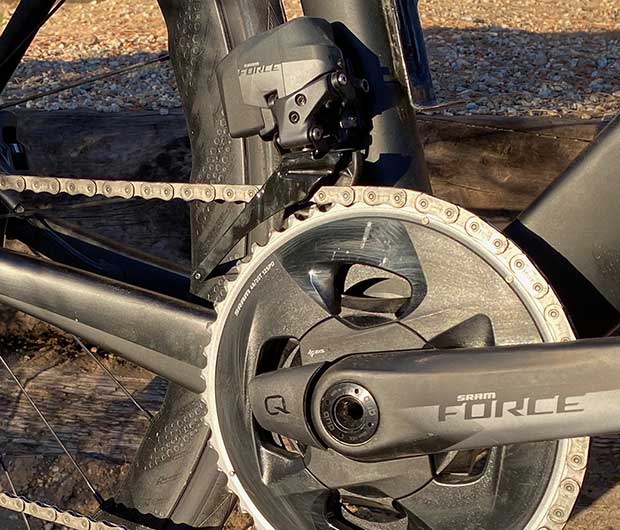
So, while I’m not quite geared low enough (because I don’t have that smallest gear set up from SRAM, neither the ultra-small-geared crank/FD, nor the MAX cassette/RD), the SRAM drivetrain on this bike gives me a mighty low gear with the 35×33, with the capacity to go much lower.
Yes, I could do pretty well with groupsets from other manufacturers. A 12sp Campagnolo electronic groupset, like Super Record, can be gotten with a 34×34 as a low gear, but I’m not prepared to spend that much money. Shimano can equal that, with a 34×34 on an Ultegra Di2, but it’s 11sp. The point of this SRAM groupset is that it can go as low as a 30-tooth chain ring and a 36-tooth cog, which I did have on a Cervelo Caledonia I rode last year. If I want a gear lower than a 1:1 ratio (pronounced “one to one”, which is what you get when the gears in the front and the back have the same number of teeth) I can only do that with SRAM AXS (unless I put a Shimano’s gravel groupset, GRX, on my road bike). I could foresee swapping out the chain ring set I now have for a 46×33, but what I’ll likely do, first, is replace the current RD with a Force MAX RD, and put a 10-36 cassette on this bike. Until then, I’m going to just push the plate away a little sooner at each meal, and ride more.
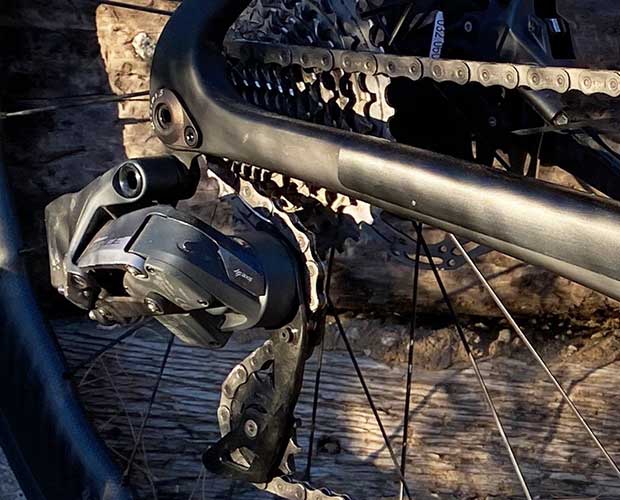
So you see my imperative here. My decision on a groupset, for this bike, was based on a calculation of where I intend to ride this bike; what power I will produce; what cadence I will ride in the lowest gear; and what is the low gear available to me among the groupsets from which I might choose? This decision process – this low gear imperative – does not simply refer to my road bike. You may have noticed that IRONMAN St. George 70.3 was recently contested. That bike course features a breathtakingly beautiful section through what is called Snow Canyon, and during that section the bike route climbs about 1000 vertical feet… in a hurry. That climb has sustained sections of 9 percent on average, as you get near the top. If you don’t come prepared for that, you’re either riding a cadence way too low, or a power way too high. Either way, those are bullets you’re shooting on the bike that you had been reserving for the run. Gearing is important, low gears in particular, and few tri bikes over the last 25 years have been spec’d by the factory with gearing made for that St. George course, for most people. Anyway…
The negatives about this groupset I’ll get to, but let me finish out why I like this group. Obviously the gearing, or at least the prospect for eventual super-low gearing. This was the biggie. Not just the gearing range, but 12 cogs. The electronic shifting is also adjustable on the fly, while you’re riding. In such case that I perceive the shifting to slightly favor the upshift, or the downshift, I can adjust by pushing a button on the hood and you push the paddle; left hood to adjust the RD slightly inboard; right hood for outboard.
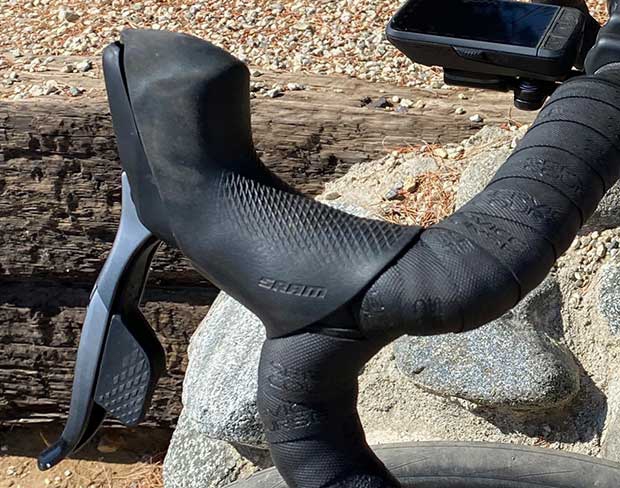
Remember that this Quintana Roo SRsix frameset I chose has all wiring, cabling, hoses routed internally. SRAM’s road groupset is fully wireless; I only had to worry about routing hydraulic brake lines through the stem. Then there is the integrated power meter, from Quarq, that is spot-on accurate. Shimano has a little ways to go before its integrated PM is as provably accurate.
There is one battery on each of SRAM’s derailleurs and this kind of fits my lifestyle. These batteries are small; they’re light; and they’re $55 each. My everyday driver is a pickup truck. I have a center console in my vehicle, as most of us do, and I have a couple of USB ports in that console. I have a couple of micro-USB charging cables in those ports, and in a tray on that console sits my Wahoo ROAM head unit; my Garmin Varia rear radar (or two), and a charger for a SRAM derailleur battery, a spare battery, and my multitool.
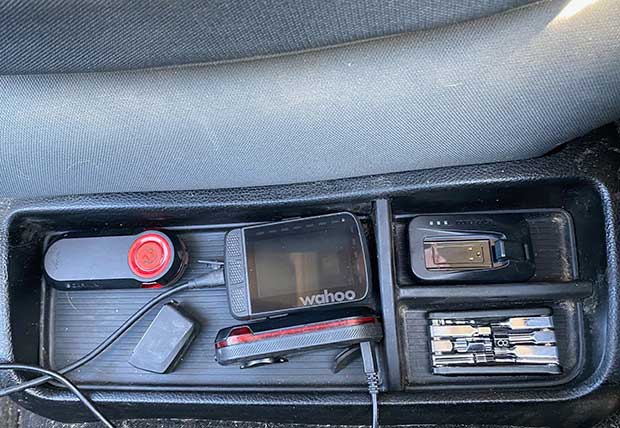
As I’m driving around, to and from my pool sessions, whatever, I’m charging my electronics. When I ride, that spare SRAM derailleur battery is part of my carry-aboards. If I just have gone too long and have forgotten to charge my derailleur batteries, and ignore the warning lights, I’ve got the spare derailleur battery with me if one of those batteries dies.
Those are all the reasons the SRAM groupset appeals to me. If SRAMmies are reading I’m sure they’re thinking well of me. I hope I don’t undo that! But here goes…
Shimano shifting reigns supreme. This is mostly a front derailleur thing. For my own riding SRAM has not yet – nor has it ever – caught all the way up to Shimano’s front derailleur performance. Part of this is user error on my part, not manufacturer error. SRAM has a very particular process for front derailleur adjustment. You veer from this process at your peril. There is a tool you use to mount SRAM’s front derailleur – a jig – and you use this before you place the chain on the bike. Yes, there is a process for adjustment with the chain already mounted, but that process is not quite as foolproof (or else they never would have made the jig). If I give my bike to a SRAM mechanic, and I get that bike handed back to me, it shifts as well as Shimano. But I just don’t quite have the same touch, when I adjust the front derailleur, and I as I live in the middle of nowhere I’m the mechanic, not Velofix, not SRAM.
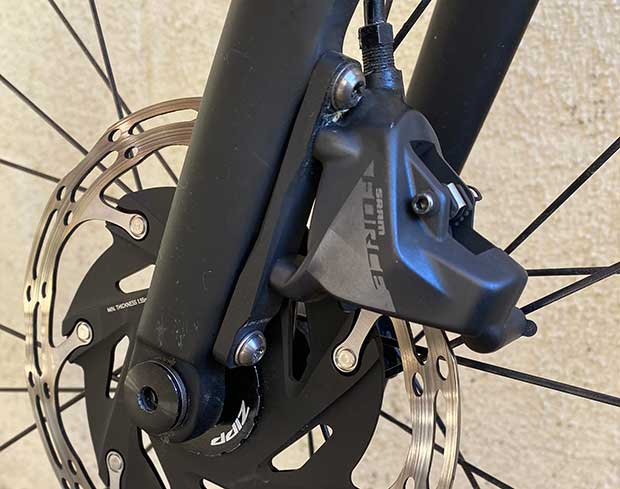
I write this with the following acknowledgement: The bike shifts just great. Front and rear. The shift system is pure pleasure. I would not be writing this at all, except, well, Shimano exists. That shift system is just a little better, and the FD a bit easier to dial in.
I suspect this may be a pivotal year for Shimano in road componentry. So rumor has it. Were I to make a groupset selection for this same bike nearer the end of 2021, for the same purposes I have in mind, I might have selected a different groupset. But I don’t know. When I made my selection, in early 2021, the groupset that fits my needs, my lifestyle, considering the kind of riding I do, and the available ports in my pickup truck, is SRAM Force eTap AXS. My gravel bike also has SRAM Force AXS eTap, from the crank forward, and SRAM Eagle behind the crank, a 40-tooth ring in the front, a 10-50 12sp cassette in the back. It’s 1x. For this, no equivocating. It just is spot-on perfect, perfect gearing, perfect shifting, no complaints. But then, it’s a 1x. No FD. So, that one area where Shimano has (what I perceive to be) a clear advantage is not an issue on my gravel bike.
In future installments I’ll talk about how I selected my saddles, wheels, tires, electronics and so on.



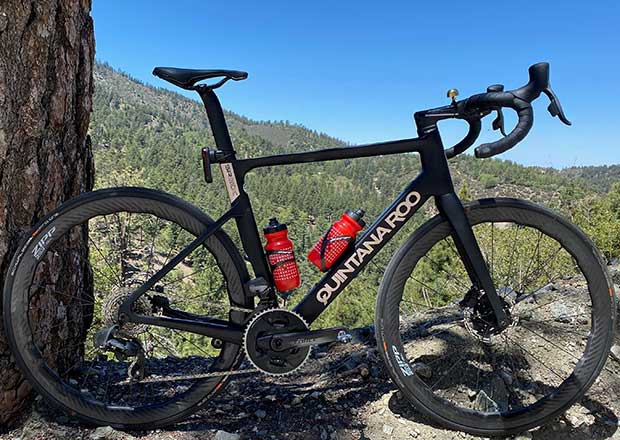
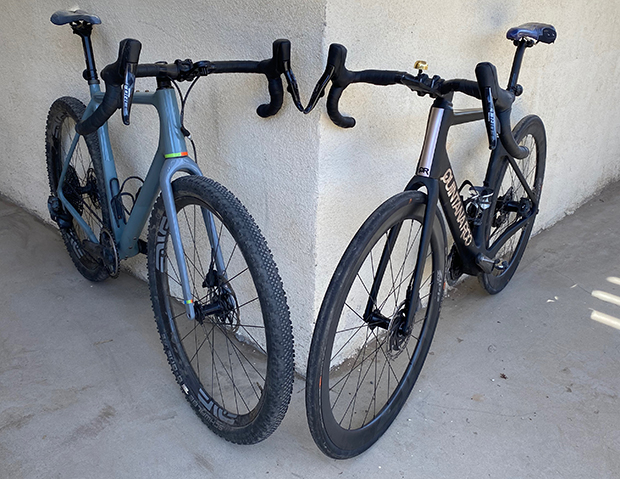
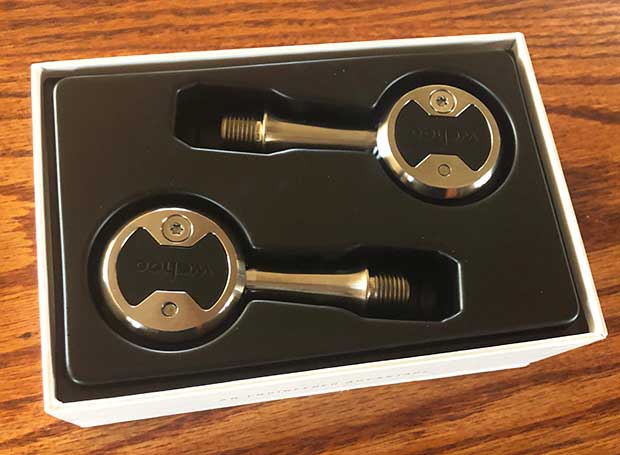

Start the discussion at forum.slowtwitch.com